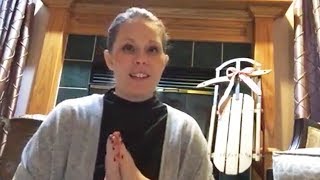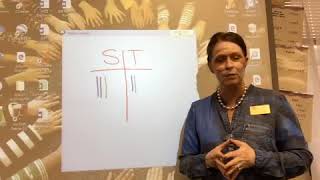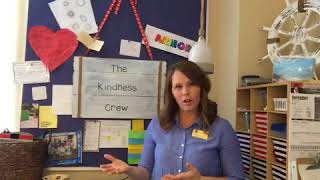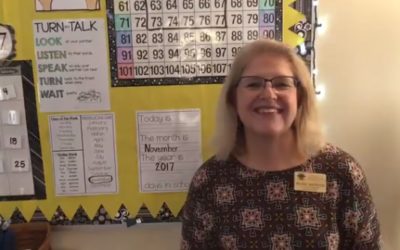Reading about a new topic with special ed students
Abby Davis | Oxford Junior/Senior High School | Oxford, Kansas
When reading and learning about new topics, especially abstract ones, there are many different strategies you can incorporate to help special ed students learn.
Read transcript
Since it’s December, we start with holiday traditions. And the best way to start that with kids is to have them decorate. They’re all excited about it anyway, and this one isn’t very hard to get people sucked into; they like it. And we have a curriculum that allows me to put things on the board. We read the story together, page by page. It has different levels, so depending on who I have in class and who I want to read, I can choose different levels, and I can show you some of the pages. Some of the pages are like this. Some of the pages are like this. For some of the kids, it’s easier to have the pictures with the words. It helps them to be able to read and to understand what we’re saying and what we’re doing.
This brief lesson is just the start of the Tradition unit. And we go through the Tradition preview, then we go into different chapters and talk about different traditions. It’s not just Christmas, even though for the group that I have right now Christmas is probably the only one they know about. They hear about some different traditions from other cultures, but we’re in a small town, and it’s not a hugely diverse group, so they’re all doing the same thing. So we go through the story, and then we have questions that go with it. These have color, and the ones that I print are black and white, so color seems to draw people in as well. It gets their attention, it makes them more engaged, to see pictures on the board.
Once we’ve gone over the story, usually two or three times, and discussed it thoroughly, then we go to the questions. The questions are also very diverse. You have short, little, rectangular squares there, those are for words. They can either write the answer in or they can use word cards and just paste it in or tape it in. It just depends on what the kid can do. Then there’s bigger ones for the picture cards: bigger squares, bigger answers. Pictures and words. Then, if the kid really needs to narrow it down, we have one question per page, and it already has the squares put in, we use those squares. Some of the questions will have three squares and it’ll have three different answers in it like a multiple choice, but it’s one question per page, and it’s horizontal like this so the kids can look at it. It makes it much easier; it’s already differentiated for the students. They like it, and I allow them to choose, for the most part, which ones they want to do. It depends on the day, sometimes. This one’s easier with no pictures, but sometimes they prefer the pictures.
Sometimes we do these on the board. I can project it up there, and they can use the pen and they can circle the answers, and then we can print it right then and it’s all done. They like that too. Then, just because you have to keep ready for test prep, They have a back, and the last questions usually have circles. This is great for kids who can write or hold a pencil. It’s a little more difficult for those who can’t. So, again, we go back to these. If you can’t hold a pencil and you can’t circle it, we might have to use this. It just depends on who the person is and what their needs are. We have comprehension questions. We have inference questions. We do a lot of main idea with this. It’s all built into the discussion.
In the lesson plans themselves that come with this, it has a lot of discussion questions in it. There’s pages and pages of the discussions and how to guide that, and extra activities. So one of our extra activities was to do stockings, so yesterday, because that’s pretty much a tradition that all of us had, we made stockings. And if you look over here you’ll see that they’ve already decorated them yesterday with glitter. It’s really cool. They had a good time, and it gave them a chance to talk about tradition. Because that’s kind of an abstract concept, and it was kind of hard for them to understand what tradition is. It’s something you do over and over in the family at the same time every year, or in your group, at your church, at your community, at your school, what do we do? We all have different traditions. What ones do we share?
Help teachers and children
worldwide by sharing how
you teach.
A global movement of people sharing knowledge and learning from each other, to better educate our children and create hope for the world.
A global movement of people sharing knowledge and learning from each other, to better educate our children and create hope for the world.






